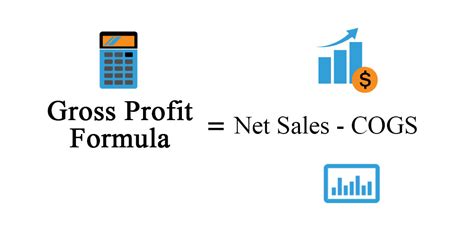How to Find Gross Profit: A Simple Guide for Businesses
Understanding your gross profit is crucial for the financial health of any business. It's a key indicator of your profitability and efficiency, allowing you to make informed decisions about pricing, costs, and overall business strategy. This guide will walk you through how to calculate gross profit and what it means for your business.
What is Gross Profit?
Gross profit represents the revenue left over after deducting the direct costs associated with producing your goods or services. It's a crucial figure because it shows the profit generated before considering indirect costs like rent, salaries, and marketing. A high gross profit margin suggests efficient operations and potentially strong pricing strategies. A low gross profit margin may signal areas needing improvement, such as cost reduction or price adjustments.
The Gross Profit Formula
The formula for calculating gross profit is straightforward:
Gross Profit = Revenue - Cost of Goods Sold (COGS)
Let's break down each component:
1. Revenue:
Revenue is the total income generated from your sales. This includes all money received from selling your products or services during a specific period (e.g., a month, quarter, or year). It's crucial to accurately track all revenue streams.
2. Cost of Goods Sold (COGS):
COGS represents the direct costs directly attributable to producing your goods or services. These costs vary depending on your industry but generally include:
- Direct Materials: Raw materials, components, and supplies used in production.
- Direct Labor: Wages and benefits paid to employees directly involved in production.
- Manufacturing Overhead: Costs like factory rent, utilities, and equipment maintenance directly related to production.
For service-based businesses, COGS might include the direct costs of providing the service, such as materials consumed during the service and directly related labor costs.
Calculating Gross Profit: A Practical Example
Let's say a bakery (Sweet Success) had total revenue of $50,000 in a month. Their COGS for that month included:
- Flour, sugar, and other ingredients: $10,000
- Baker's wages: $15,000
- Oven maintenance and electricity: $2,000
Therefore, their COGS is $10,000 + $15,000 + $2,000 = $27,000
Their gross profit is: $50,000 (Revenue) - $27,000 (COGS) = $23,000
Understanding Gross Profit Margin
While gross profit is important, understanding the gross profit margin provides a more insightful perspective. It expresses gross profit as a percentage of revenue, allowing for comparison across different periods and businesses.
Gross Profit Margin = (Gross Profit / Revenue) x 100
In Sweet Success's case: ($23,000 / $50,000) x 100 = 46%
A 46% gross profit margin indicates that for every dollar of revenue, 46 cents are left over after covering direct costs.
Using Gross Profit to Improve Your Business
Analyzing your gross profit and gross profit margin can help you:
- Identify areas for cost reduction: Pinpointing high COGS elements allows for negotiation with suppliers or process improvements.
- Optimize pricing strategies: A low gross profit margin might indicate the need for price adjustments to improve profitability.
- Track business performance over time: Monitoring gross profit trends helps identify growth or decline patterns.
- Compare performance to industry benchmarks: Understanding your gross profit margin relative to competitors reveals areas for improvement.
By diligently tracking your revenue and COGS, and understanding your gross profit and margin, you can gain valuable insights to make informed decisions and improve the financial health of your business.
